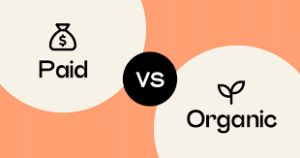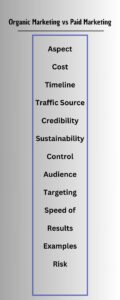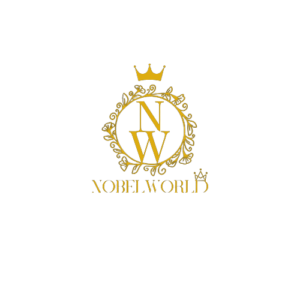Best Organic Marketing vs Paid Marketing in 2024
Organic Marketing vs Paid Marketing in 2024
Table of Contents
Toggle Organic marketing
Organic marketing
refers to the use of natural or non-paid methods to promote a product, service, or brand. Unlike paid advertising, which involves spending money on media placements, organic marketing relies on strategies that don’t involve direct financial investments. Here are some key aspects of organic marketing: Organic Marketing vs Paid Marketing in 2024.
- Search Engine Optimization (SEO): This is perhaps the most well-known aspect of organic marketing. SEO involves optimizing a website’s content, structure, and backlinks to improve its visibility on search engine results pages (SERPs). This helps increase organic (non-paid) traffic to the website.
- Content Marketing: Creating valuable and relevant content is crucial for organic marketing success. Content can include blog posts, articles, videos, infographics, and more. By providing useful information, businesses can attract and engage their target audience.
- Social Media Marketing: While social media platforms offer paid advertising options, organic marketing on social media involves building a presence, sharing content, and engaging with the audience without spending money on sponsored posts. Building a community and fostering relationships can lead to organic growth.
- Email Marketing: Building and maintaining an email list allows businesses to communicate directly with their audience. By sending targeted and valuable content through emails, companies can nurture relationships and encourage repeat business.
- Word of Mouth: Positive word-of-mouth is a powerful organic marketing tool. Satisfied customers can become brand advocates, recommending products or services to their networks. Providing excellent customer service and quality products is key to fostering positive word-of-mouth.
- Referral Programs: Encouraging existing customers to refer friends and family can be an effective organic marketing strategy. Offering incentives, discounts, or rewards for referrals can motivate customers to share their positive experiences.
- Public Relations (PR): Gaining media coverage through press releases, interviews, and other PR efforts can contribute to organic marketing. Positive mentions in the media can increase brand visibility and credibility.
- Influencer Marketing: Partnering with influencers who align with your brand can help you reach a larger audience organically. Influencers can promote products or services to their followers, leveraging their trust and influence.
- Online Reviews and Ratings: Positive reviews and ratings on platforms such as Google, Yelp, or industry-specific review sites can boost organic visibility and build trust with potential customers.
- Community Engagement: Actively participating in online and offline communities related to your industry or niche can help establish your brand’s authority and credibility. This can include forums, social media groups, and local events.
Organic marketing is a long-term strategy that focuses on building relationships and delivering value to your audience. While it may take time to see significant results, the benefits often include sustained growth, increased brand loyalty, and a strong reputation within your industry.
Paid marketing, also known as paid advertising or pay-per-click (PPC) marketing, involves businesses or individuals paying for the placement of promotional content to reach a targeted audience. This type of marketing relies on direct financial investments to achieve specific business objectives, such as increasing brand visibility, driving website traffic, generating leads, or boosting sales. Here are key details about paid marketing:
- Search Engine Advertising (PPC):
- Advertisers bid on keywords relevant to their products or services.
- Ads are displayed at the top of search engine results pages (SERPs) when users search for the targeted keywords.
- Payment is based on the number of clicks received (pay-per-click), and ad positions are determined by bid amount and quality score.
- Social Media Advertising:
- Businesses can create and promote ads on popular social media platforms such as Facebook, Instagram, Twitter, LinkedIn, and others.
- Advertisers can target specific demographics, interests, and behaviors to reach their desired audience.
- Payment models include cost-per-click (CPC), cost-per-impression (CPM), or cost-per-engagement (CPE).
- Display Advertising:
- Visual ads, such as banners or interactive media, are placed on third-party websites or apps.
- Targeting options may include demographics, interests, or retargeting based on user behavior.
- Payment is often based on impressions (CPM) or clicks (CPC).
- Video Advertising:
- Ads are displayed within or alongside online videos on platforms like YouTube or social media.
- Advertisers pay based on views, impressions, or interactions.
- Video ads can be an effective way to engage audiences with rich media content.
- Content Discovery Platforms:
- Native advertising is used to promote content on platforms like Taboola or Outbrain.
- Ads are displayed alongside editorial content, blending in with the platform’s overall look and feel.
- Payment is typically based on clicks or impressions.
- Affiliate Marketing:
- Advertisers pay affiliates (partners) a commission for driving traffic, leads, or sales to their website.
- Affiliates promote products or services through various channels, and compensation is performance-based.
- Email Marketing (Sponsored Emails):
- Advertisers pay to have their products or services promoted in email newsletters or marketing campaigns sent by third-party entities.
- Influencer Marketing (Paid Partnerships):
- Businesses collaborate with influencers to promote their products or services to the influencer’s audience.
- Compensation may include a flat fee, free products, or a combination of both.
- Remarketing/Retargeting:
- Targeted ads are shown to users who have previously interacted with a website but did not convert.
- Ads aim to re-engage users and encourage them to complete a desired action.
- Offline Advertising:
- Traditional forms of advertising, including television, radio, print, and outdoor advertising, involve paying for ad placement and production.
Paid marketing offers the advantage of immediate results and precise targeting but requires careful planning, monitoring, and optimization to ensure a positive return on investment (ROI). It is often used in conjunction with organic marketing strategies for a comprehensive and balanced marketing approach.
Certainly! Below is a simplified table highlighting the key Differences Between Organic Marketing vs Paid Marketing
| Aspect | Organic Marketing | Paid Marketing |
|---|---|---|
| Cost | Typically lower cost (time and effort-intensive). | Involves direct financial investment (ad spend). |
| Timeline | Long-term strategy with gradual results. | Immediate results can be achieved. |
| Traffic Source | Natural, non-paid sources (search engines, word of mouth). | Paid sources (search engine ads, social media ads, etc.). |
| Credibility | Builds credibility over time through content and community engagement. | Immediate visibility but may be perceived as advertising. |
| Sustainability | Sustainable growth over time. | Results cease when ad spend is halted. |
| Control | Limited control over search engine algorithms. | Full control over ad targeting, placement, and content. |
| Audience Targeting | Relies on content relevance and SEO efforts. | Highly targeted based on demographics, behavior, etc. |
| Speed of Results | Slower to see significant results. | Quick and measurable results can be achieved. |
| Examples | SEO, content marketing, social media engagement. | PPC advertising, social media ads, display ads. |
| Risk | Lower financial risk but may take time to see ROI. | Immediate results but financial risk if not well-managed. |
It’s important to note that a balanced marketing strategy often involves a combination of both Organic Marketing vs Paid Marketing efforts to maximize reach, impact, and return on investment. The ideal mix depends on the specific goals, budget, and target audience of a business or campaign on organic marketing vs paid marketing.
The choice between Organic Marketing vs Paid Marketing depends on various factors, and both approaches have their own advantages and disadvantages. Here’s a brief overview of each Organic Marketing vs Paid Marketing:
Organic Marketing:
- Cost-Effective: Organic marketing methods, such as content marketing and social media engagement, are generally more cost-effective in the long run because you aren’t paying for placements or clicks.
- Sustainable Growth: Building organic traffic and engagement takes time, but it can result in sustainable, long-term growth. A well-executed organic strategy can lead to a loyal customer base.
- Credibility and Trust: Organic methods often build credibility and trust with your audience. Content, reviews, and social media interactions contribute to a positive brand image.
- SEO Benefits: Organic strategies contribute to search engine optimization (SEO), helping your business rank higher in search engine results over time.
Paid Marketing:
- Immediate Results: Paid marketing, such as PPC (Pay-Per-Click) advertising, provides immediate visibility and results. You can target specific demographics and start seeing traffic almost instantly.
- Controlled Exposure: With paid marketing, you have more control over where and when your ads are displayed, allowing you to target specific audiences more precisely.
- Scalability: Paid campaigns can be easily scaled up or down based on your budget and goals. This flexibility is especially useful for short-term promotions or product launches.
- Data and Analytics: Paid advertising platforms provide detailed analytics, allowing you to track performance metrics and make data-driven decisions to optimize your campaigns.
Finding the Right Mix:
In many cases, a combination of both Organic Marketing vs Paid Marketing strategies is the most effective approach. The specific mix will depend on your business goals, target audience, budget, and industry for the comprise of Organic Marketing vs Paid Marketing.
- Start with Organic: Building a strong foundation through organic methods can provide a sustainable base for your marketing efforts for organic marketing vs paid marketing.
- Complement with Paid: Use paid marketing to complement organic efforts, especially when you need quick results, want to target specific demographics, or run time-sensitive campaigns for organic marketing vs paid marketing.
Ultimately, the key is to continually analyze your results and adjust your strategy accordingly. Organic Marketing vs Paid Marketing test different approaches to find the right balance for your unique business needs.
Organic marketing vs paid marketing, are two distinct approaches to promoting products or services, each with its own set of advantages and considerations.
Organic Marketing:
Definition: Organic marketing refers to the use of unpaid, naturally occurring methods to promote a brand or product. It relies on creating and distributing content that attracts and engages the target audience.
Channels: Organic marketing typically takes place through channels such as search engine optimization (SEO), content marketing, social media, and word-of-mouth.
Advantages:
- Cost-Effective: Organic methods are generally free, making them more budget-friendly for smaller businesses.
- Authenticity: Builds credibility and trust as it relies on genuine interactions and content.
- Sustainability: Results may take time, but they can have a lasting impact.
Considerations:
- Time-Consuming: It takes time to see results, as organic growth is gradual.
- Algorithm Changes: Platforms may change their algorithms, impacting organic reach.
Paid Marketing:
Definition: Paid marketing involves investing money in advertising to reach a specific audience quickly. This can include paid search advertising, social media ads, display ads, and more.
Channels: Paid marketing operates on platforms like Google Ads, Facebook Ads, Instagram Ads, and other paid media channels.
Advantages:
- Immediate Results: Provides quick visibility and can generate fast results.
- Targeting Options: Allows precise targeting based on demographics, interests, and behavior.
- Control: Marketers have more control over the reach and frequency of their campaigns.
Considerations:
- Cost: Requires a budget, and costs can escalate depending on competition.
- Temporary Impact: Results may decline once the advertising stops.
Conclusion:
Choosing between Organic marketing vs Paid marketing depends on factors such as budget, goals, and timeline. Organic marketing is a sustainable, long-term strategy that builds trust, while paid marketing offers immediacy and control, but at a cost. A balanced approach often involves integrating for Organic marketing vs Paid marketing methods to maximize reach and effectiveness in the overall marketing strategy.
Benefits of Organic Marketing
Organic marketing offers several benefits for businesses looking to establish a sustainable online presence and build a loyal customer base. Here are some key advantages:
- Cost-Effective:
- One of the primary benefits of organic marketing is that it is generally more cost-effective than paid methods. While it may require time and effort, the monetary investment is often lower, making it an attractive option for businesses with limited budgets.
- Credibility and Trust:
- Organic marketing emphasizes authentic interactions and content creation. This focus on genuine engagement helps build credibility and trust with the audience. Consumers often trust organic search results, reviews, and recommendations more than paid advertisements.
- Long-Term Impact:
- Organic strategies, such as search engine optimization (SEO) and content marketing, contribute to long-term visibility. Once established, high-quality content can continue to attract and engage audiences over an extended period, providing lasting value.
- Targeted Audience Engagement:
- By creating valuable and relevant content, businesses can attract an audience genuinely interested in their products or services. This targeted approach helps in building a community of engaged followers who are more likely to convert into customers.
- Improved Search Engine Visibility:
- Organic marketing, particularly through SEO practices, enhances a website’s visibility in search engine results. Appearing on the first page of search results can significantly increase the likelihood of attracting organic traffic and potential customers.
- Sustainability:
- Organic marketing methods focus on building a sustainable online presence. Instead of relying on short-term advertising campaigns, businesses invest in creating valuable content and establishing themselves as authoritative sources in their industry.
- Adaptability to Algorithm Changes:
- While algorithm changes in search engines and social media platforms can impact organic reach, businesses that consistently provide high-quality content and engage with their audience can adapt more effectively to these changes.
- Social Proof and Word-of-Mouth:
- Organic marketing often involves user-generated content, reviews, and social media interactions. Positive experiences shared by customers contribute to social proof, influencing potential customers and driving word-of-mouth referrals.
- Educational Value:
- Content created as part of organic marketing efforts can serve an educational purpose. By providing valuable information, businesses position themselves as experts in their field, helping customers make informed decisions.
- Sustainable Growth:
- Over time, the cumulative effects of organic marketing efforts can lead to sustainable business growth. Building a strong online presence, fostering customer relationships, and consistently delivering value contribute to long-term success.
In summary, organic marketing offers a cost-effective, sustainable, and credibility-building approach for businesses seeking to establish a meaningful and lasting connection with their target audience.
- Immediate Results:
- Unlike organic marketing, which takes time to show results, paid marketing delivers immediate visibility. Businesses can instantly reach a large audience through paid advertising channels such as search engines and social media platforms.
- Precise Targeting:
- Paid marketing allows for highly targeted campaigns. Advertisers can define their audience based on demographics, interests, behavior, and other factors. This precision ensures that ads are shown to the most relevant and potentially interested users.
- Control Overreach and Frequency:
- Advertisers have control over the reach and frequency of their campaigns. They can set budgets, choose the duration of the campaign, and adjust ad placements to optimize performance. This control helps in managing costs and maximizing effectiveness.
- Brand Visibility:
- Paid marketing enhances brand visibility, especially for new businesses or those entering competitive markets. Paid ads appear prominently on search engine results pages, social media feeds, and other online platforms, increasing brand exposure.
- Data and Analytics:
- Paid marketing platforms provide detailed analytics and insights into campaign performance. Advertisers can track metrics such as impressions, clicks, conversions, and return on investment (ROI). This data helps in refining strategies and making data-driven decisions.
- Quick Adaptation to Changes:
- Paid advertising allows businesses to quickly adapt to changes in the market, industry, or consumer behavior. Campaigns can be adjusted, paused, or scaled up/down in response to real-time data and emerging trends.
- Promotion of Time-Sensitive Offers:
- For promotions, sales, or events with a time-sensitive nature, paid marketing is highly effective. Businesses can create urgency by running targeted ads for limited-time offers, encouraging immediate action from the audience.
- Competitive Advantage:
- In competitive industries, paid marketing provides a way to stand out and gain a competitive edge. Being featured prominently in search results or social media feeds can help a business capture the attention of potential customers ahead of competitors.
- Customizable Ad Formats:
- Paid marketing offers a variety of ad formats, including text ads, display ads, video ads, and more. Advertisers can choose the format that best suits their goals and target audience, enhancing the overall effectiveness of the campaign.
- Global Reach:
- Paid marketing enables businesses to reach a global audience quickly. Whether targeting a specific geographic region or a broad international market, paid advertising platforms allow for geographical targeting to tailor campaigns to specific locations.
In conclusion, of Organic marketing vs Paid marketing, Paid marketing provides businesses with a powerful tool to achieve rapid and targeted exposure, control campaign parameters, and access valuable data for continuous improvement. When used strategically, paid marketing complements organic efforts and contributes to a comprehensive and results-driven marketing strategy.
Another interesting blog you can check it out here.
